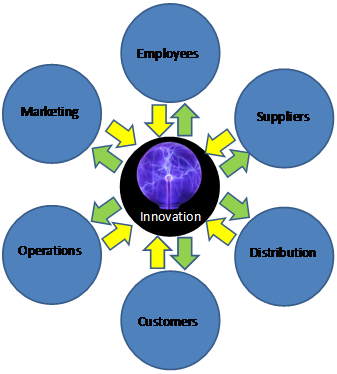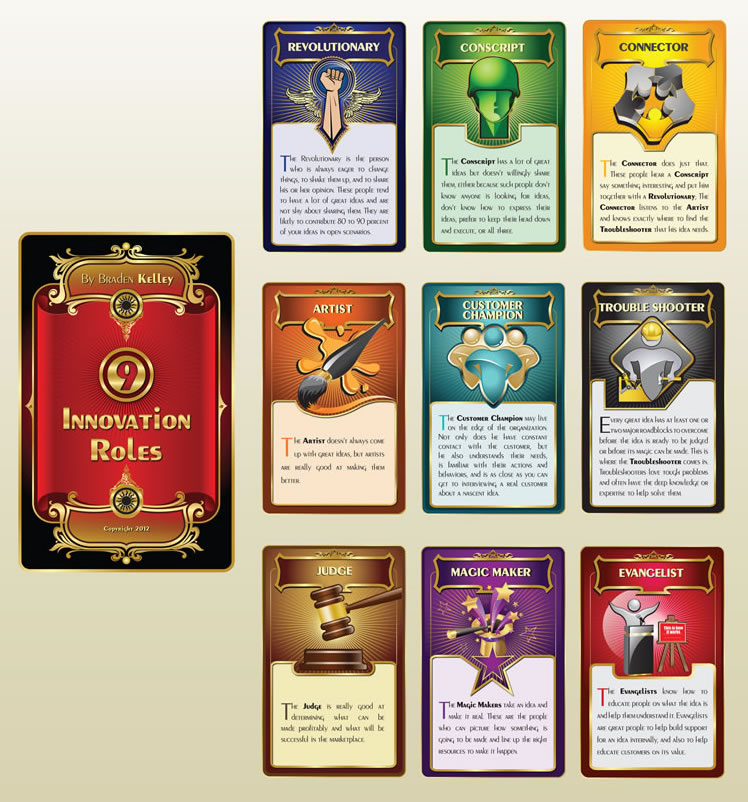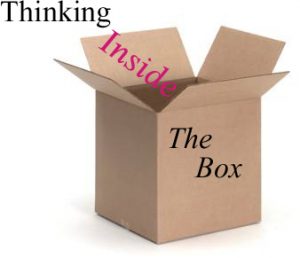 Innovation is about change. Companies that successfully innovate in a repeatable fashion have one thing in common – they are good at managing change. Now, change comes from many sources, but when it comes to innovation, the main sources are incremental innovation and disruptive innovation.
Innovation is about change. Companies that successfully innovate in a repeatable fashion have one thing in common – they are good at managing change. Now, change comes from many sources, but when it comes to innovation, the main sources are incremental innovation and disruptive innovation.
The small changes from incremental innovation often come from the realm of implementation, so the organization, customers, and other stakeholders can generally adapt. However, the large changes generated by disruptive innovation, often come from the imagination, and so these leaps forward for the business often disrupt not only the market but the internal workings of the organization as well – they also require a lot of explanation.
The change injected into organizations by innovation ebbs and flows across the whole organization’s ecosystem:

Let’s explore the change categories visualized in this framework using the Apple iPod as an example:
Changes for customers – Any disruptive innovation requires a company to imagine for the customer something they can then imagine for themselves. Go too far past your customers’ ability to imagine how the new product or service solves a real problem in their lives, and your adoption will languish.
- Customers had to try and imagine Apple as more than a computer hardware manufacturer, and begin to see them as a company to trust for reliable consumer electronics. They also had to imagine what it might mean to download music digitally (without any physical media).
Changes for employees – Disruptive innovations often require employees do things in a new way, and that can be uncomfortable, even if it is only your employees imagining what you are going to ask them to help your customers imagine.
- Employees had to acquire lots of new knowledge and skills. Apple support employees had to learn to support a different, less-technical customer. Other employees had to learn how to effectively build partnerships in the music industry.
Changes for suppliers – Innovations that disrupt the status quo may require suppliers to work with you in new ways. Some disruptive innovations may require suppliers to make drastic changes akin to those they had to make to support just-in-time manufacturing.
- Apple had to work with suppliers to source components at the higher volumes and shorter lead times required for success in consumer electronics. This meant finding some new suppliers who could handle the new volumes and market requirements.
Changes in distribution – Often big innovations disrupt whole distribution channels and this can cause challenges for incumbent organizations (think Compaq and big box retailers versus Dell Direct).
- Going into consumer electronics meant that Apple had to build relationships with the big box stores including people like Target, Wal-mart, and Costco. They also had to build a completely new distribution system – iTunes – for distributing digital music.
Changes in marketing – New products and services (especially disruptive ones), can require marketing to find and build relationships with completely different types of customers and/or require marketing to speak to customers in a different way or to reach them through different channels.
- Marketing had to begin moving the brand from computing to lifestyle, including changing the company name from ‘Apple Computer’ to ‘Apple’ in 2007.
- Marketing also had to learn how to connect with mass market consumers, and help them imagine how this new hardware/software combination would enhance their life – no small task.
Changes in operations – In addition to changes in the supply chain, the organization may have to adapt to disruptive innovations by hiring different types of employees, re-training existing employees, accounting for revenue in a different way, or going about production in a new way.
- The Apple iPod was an experience sell, which highlighted the fact that Apple didn’t really have a place where they could help customers experience their products. This led to the opening of Apple retail stores. Apple’s finance and operations had to adapt to the change from low volume, high price items to high volume, low price items. Apple also had to build out a resource-intensive online operation that didn’t exist before (lots of IT investment).
 Note that the chart has arrows going in both directions, but not simultaneously. There is a push-pull relationship. At the beginning of the innovation process the satellites influence what the innovation will look like (new production capabilities, new suppliers, ideas from partners/suppliers, component innovations, new marketing methods, etc.). But as the innovation goes into final commercialization, the direction of the change becomes outwardly focused.
Note that the chart has arrows going in both directions, but not simultaneously. There is a push-pull relationship. At the beginning of the innovation process the satellites influence what the innovation will look like (new production capabilities, new suppliers, ideas from partners/suppliers, component innovations, new marketing methods, etc.). But as the innovation goes into final commercialization, the direction of the change becomes outwardly focused.
You can see that as an organization is imagining how to take their creative idea and transform it into a valuable innovation in the marketplace, they also should be imagining all of the changes that are going to be required and how they will implement them. This is no small feat, but with proper planning, organizational learning, and adaptation over time, any organization can improve its ability to cope with and even anticipate the change necessary to implement its next disruptive innovation.
![]() Sign up here to get Human-Centered Change & Innovation Weekly delivered to your inbox every week.
Sign up here to get Human-Centered Change & Innovation Weekly delivered to your inbox every week.



 The reason that almost every scenario ends up with a centralized innovation group managing innovation is because of the complexity involved in properly managing innovation. A centralized innovation group has the opportunity to continually evolve the innovation understanding of the organization and cascade that knowledge through a set of innovation champions, distributed throughout the organization. A centralized innovation group can also remove most of the innovation management burdens from other groups by taking responsibility for managing the policies, processes, systems and training needs for idea generation, selection, funding, and development. This allows other groups to focus on achieving excellence in their day jobs and coming up with great ideas.
The reason that almost every scenario ends up with a centralized innovation group managing innovation is because of the complexity involved in properly managing innovation. A centralized innovation group has the opportunity to continually evolve the innovation understanding of the organization and cascade that knowledge through a set of innovation champions, distributed throughout the organization. A centralized innovation group can also remove most of the innovation management burdens from other groups by taking responsibility for managing the policies, processes, systems and training needs for idea generation, selection, funding, and development. This allows other groups to focus on achieving excellence in their day jobs and coming up with great ideas.


 It seems like every organization has a vision and a mission statement, and some even have mantra’s. My personal innovation mantra is to make innovation and marketing insights accessible for the greater good.
It seems like every organization has a vision and a mission statement, and some even have mantra’s. My personal innovation mantra is to make innovation and marketing insights accessible for the greater good. Best practices indicate that innovation succeeds best when it is constrained. But for some people, it doesn’t make sense that innovation needs to be constrained. – “Don’t great ideas come from giving people free reign?”
Best practices indicate that innovation succeeds best when it is constrained. But for some people, it doesn’t make sense that innovation needs to be constrained. – “Don’t great ideas come from giving people free reign?” It is much easier to lose your nerve than it is to regain it, so better not to lose it in the first place. I have lost my nerve before and made decisions I regretted for a long time after they were made. Acting out of fear leads to poor decision making and a lack of leverage that, in turn, leads to unfavorable outcomes. That is why you must maintain your nerve and focus on the actions you need to take to create positive change, rather than allowing yourself to be overtaken by fear. Fear is one of those emotions that grows to fill the space.
It is much easier to lose your nerve than it is to regain it, so better not to lose it in the first place. I have lost my nerve before and made decisions I regretted for a long time after they were made. Acting out of fear leads to poor decision making and a lack of leverage that, in turn, leads to unfavorable outcomes. That is why you must maintain your nerve and focus on the actions you need to take to create positive change, rather than allowing yourself to be overtaken by fear. Fear is one of those emotions that grows to fill the space. I had the opportunity to meet and chat with local ethnographic researcher Cynthia DuVal about the role of ethnographic research in the innovation process, and she shared an insight that I thought I would share with the rest of you.
I had the opportunity to meet and chat with local ethnographic researcher Cynthia DuVal about the role of ethnographic research in the innovation process, and she shared an insight that I thought I would share with the rest of you.
 Because the team will likely only get the insights mostly right, it is important that your go-to-market processes include a great deal of modularity and flexibility. In the same way that product development processes have to design for certain components that are ‘likely’ to be available, but also have a backup design available that substitutes already released components–should the cutting edge components not be ready in time.
Because the team will likely only get the insights mostly right, it is important that your go-to-market processes include a great deal of modularity and flexibility. In the same way that product development processes have to design for certain components that are ‘likely’ to be available, but also have a backup design available that substitutes already released components–should the cutting edge components not be ready in time.